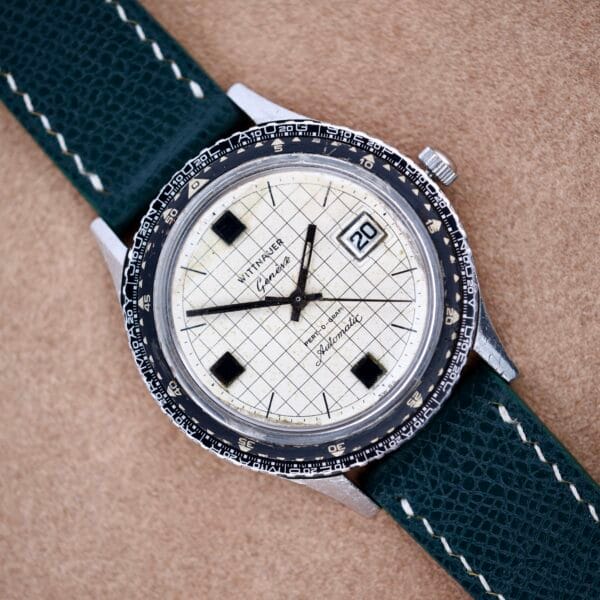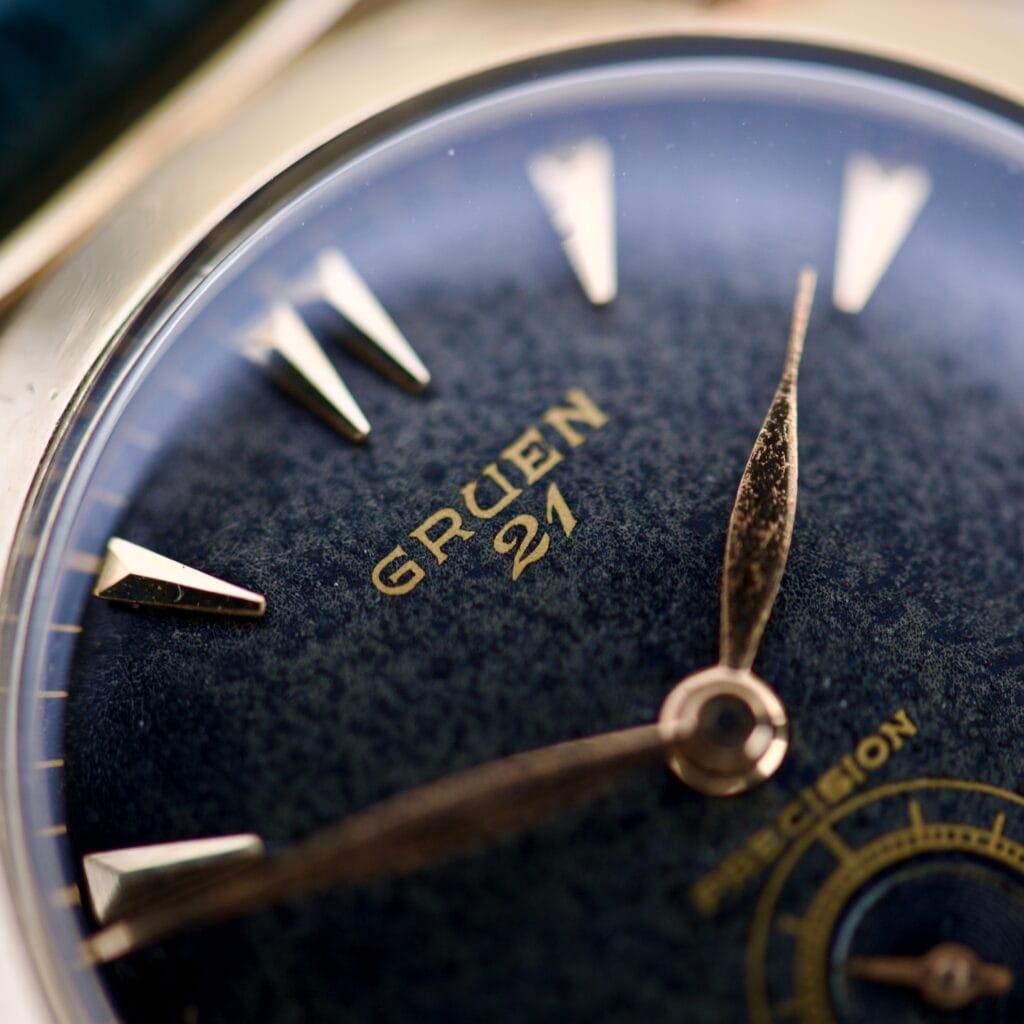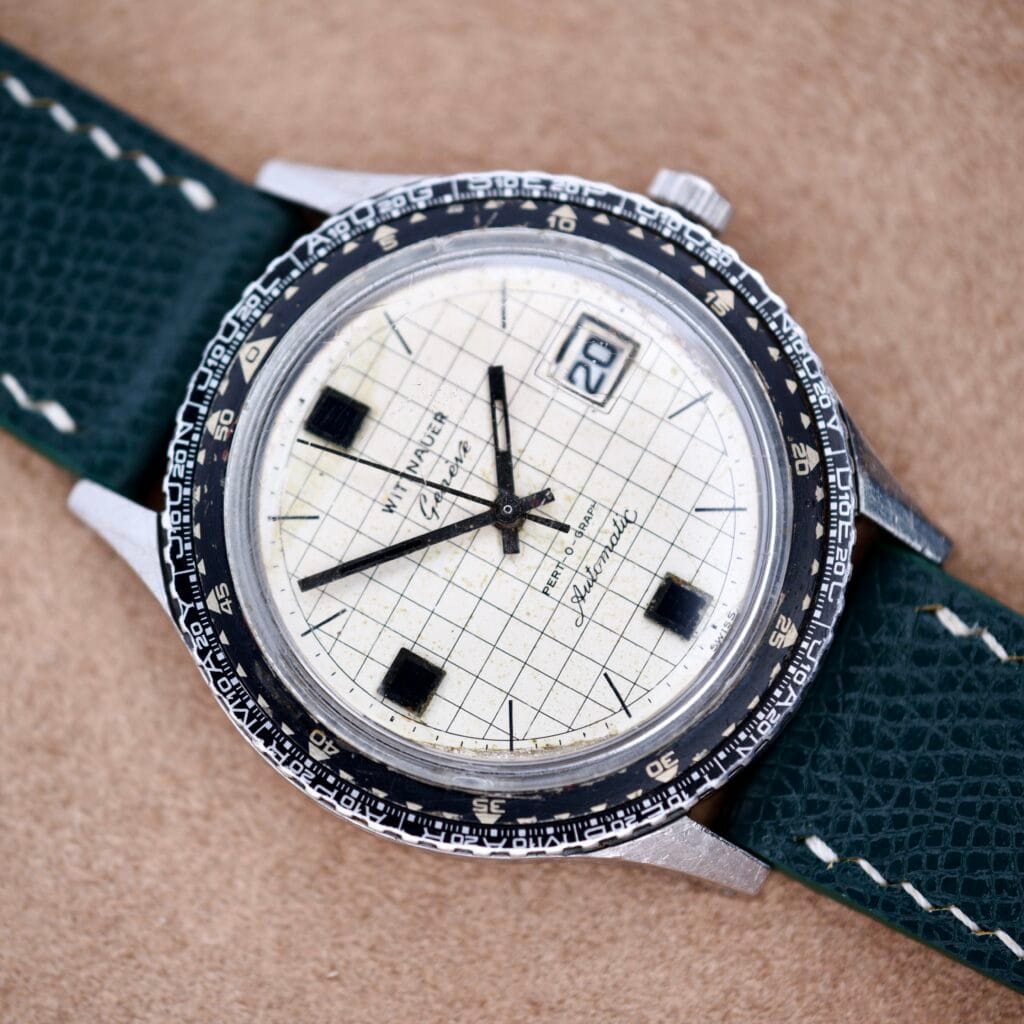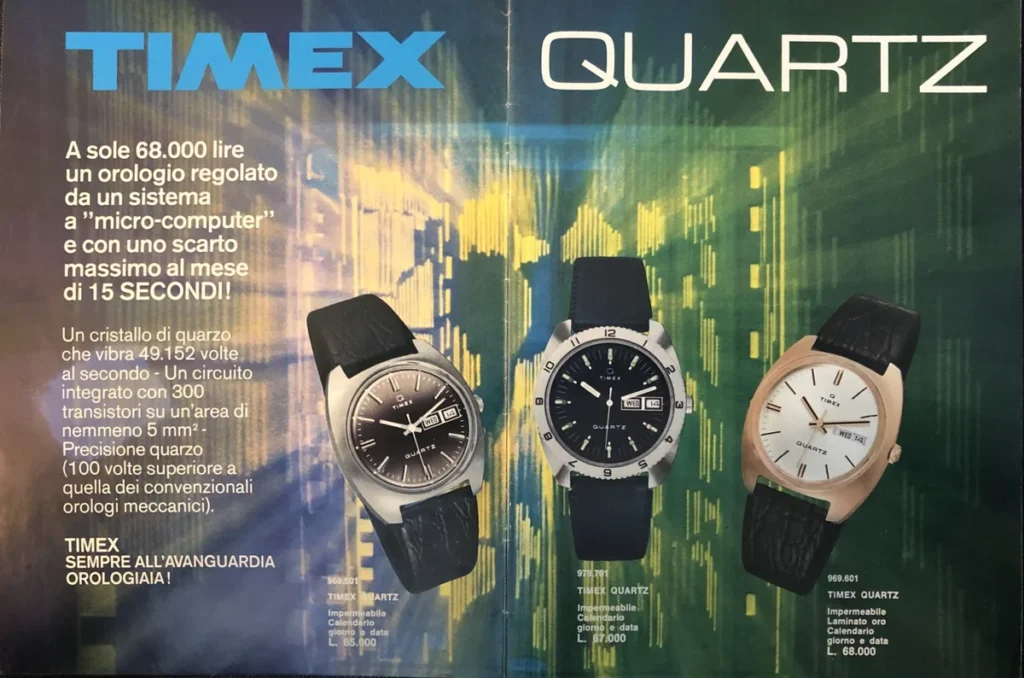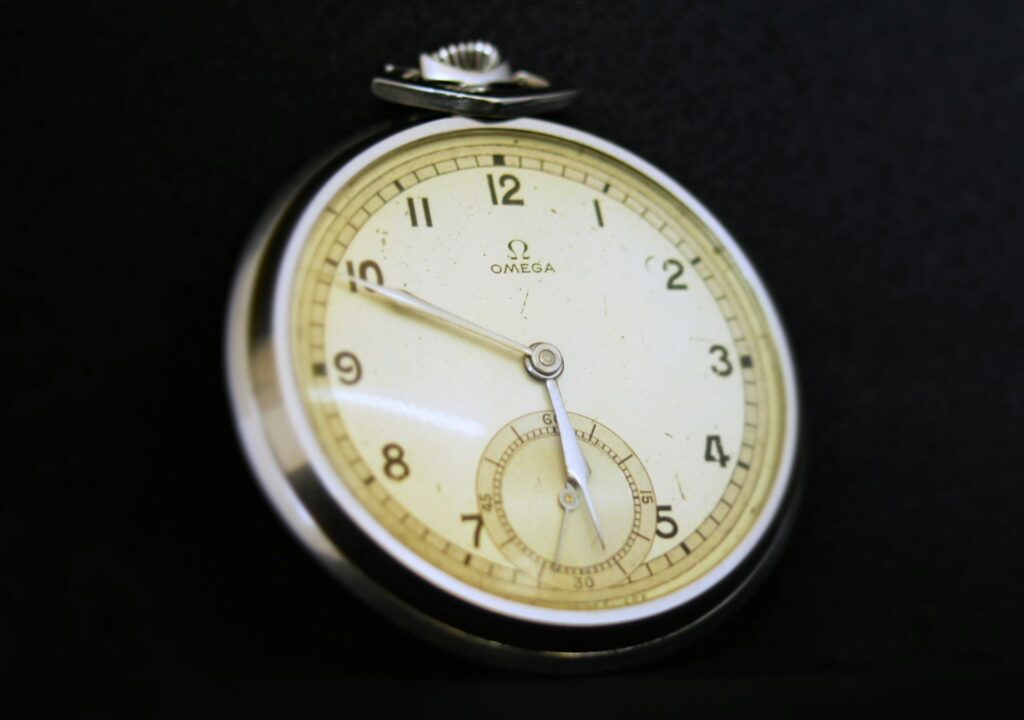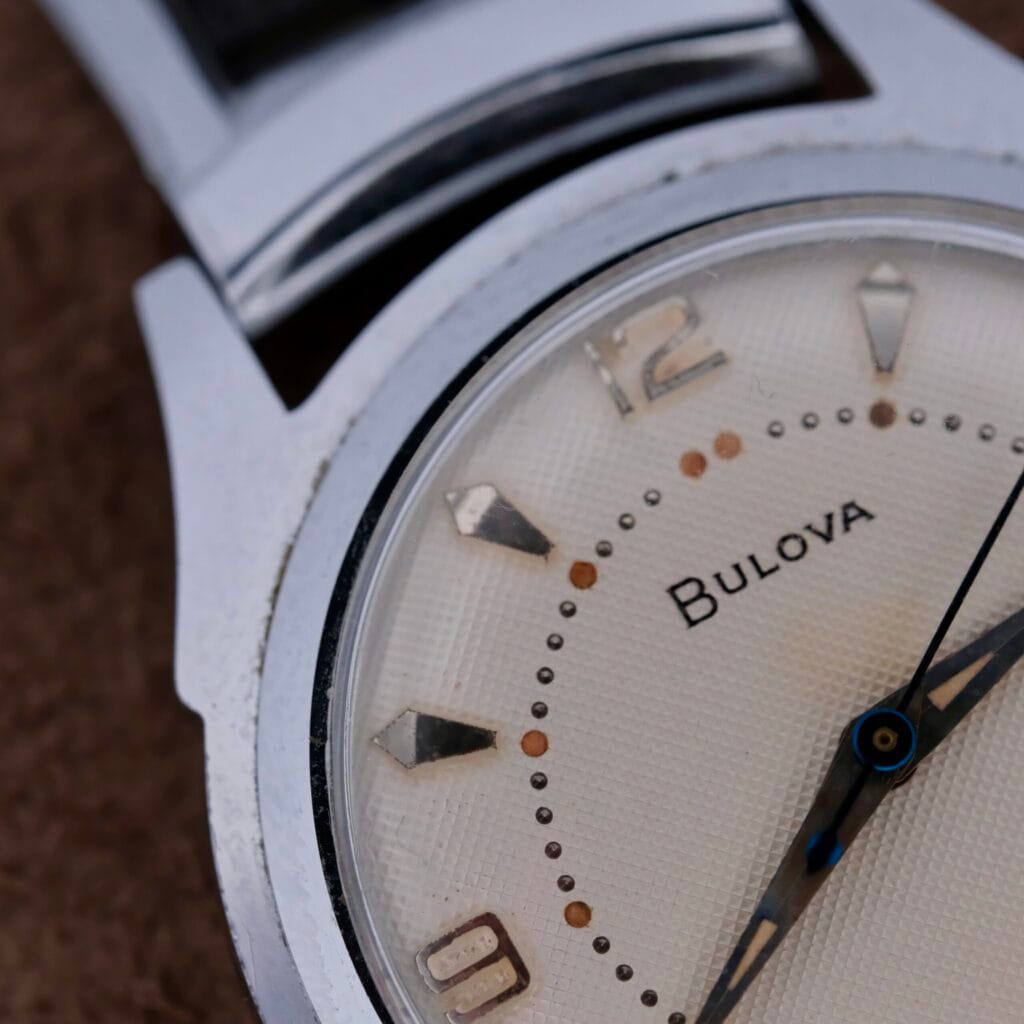Don't miss the next drop
Wittnauer Pert-o-Graph Ref. 7005: An Analog Computer for the Project Manager’s Wrist
0
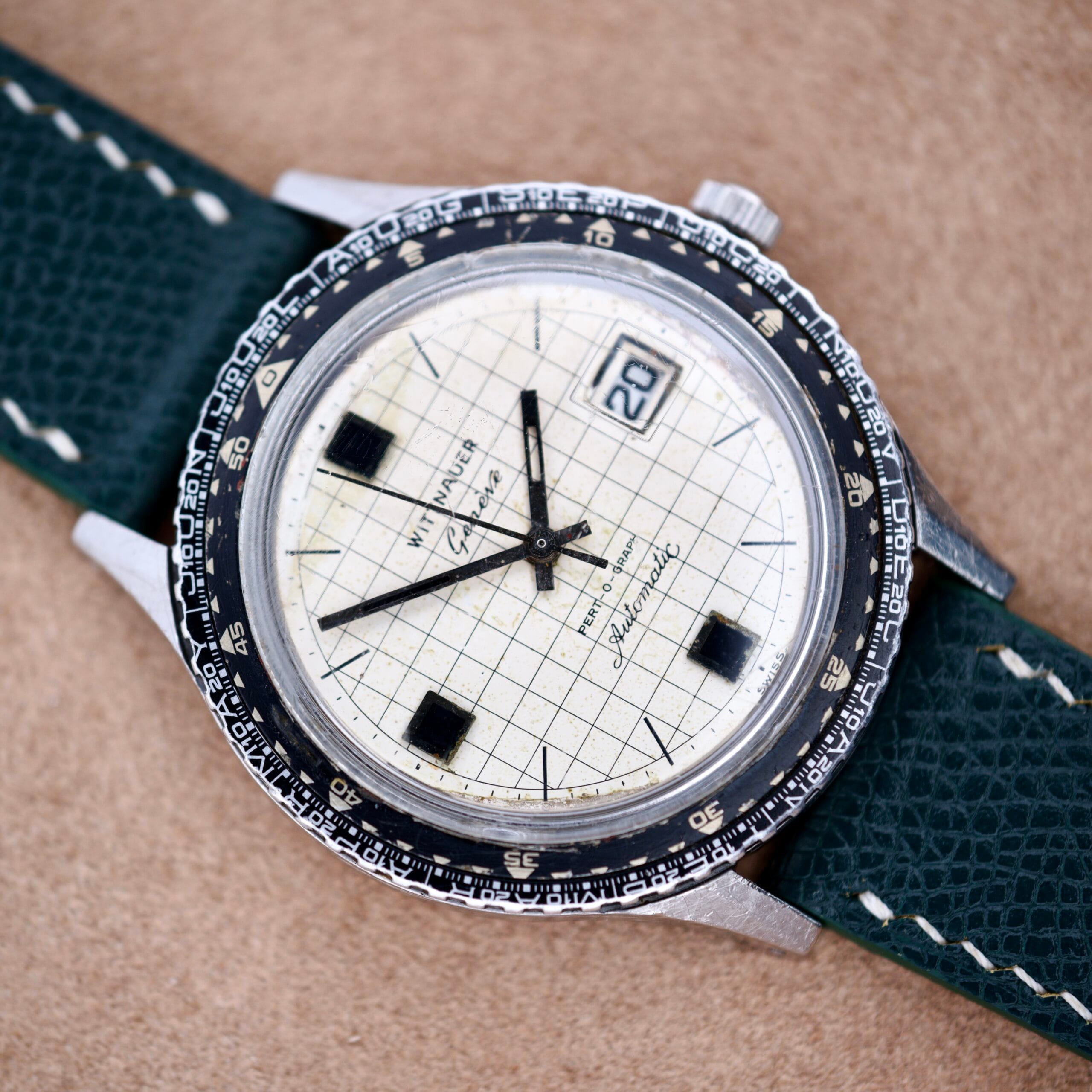
Wittnauer Pert-o-graph, tool watch or something else? In the history of horology, the “tool watch” has traditionally been defined by its utility in the face of physical frontiers. Divers’ watches plumbed the ocean depths, pilots’ chronographs conquered the skies, and explorers’ timepieces endured the harshest terrestrial environments. The Wittnauer Pert-o-Graph Reference 7005, however, represents a unique and intellectually significant departure from this convention. Introduced in the 1960s, it was a tool watch conceived not for a physical challenge, but for a logistical one. It was built for a new kind of professional: the systems analyst, the engineer, and the project manager, individuals navigating the complex organizational landscapes of the Cold War, the Space Race, and a burgeoning technological economy.
This timepiece stands as a cultural artifact, a tangible link between the world of Swiss precision timekeeping and the nascent field of modern project management theory. Its very name, “Pert-o-Graph,” is a direct reference to the Program Evaluation and Review Technique (PERT), a revolutionary management methodology developed to handle projects of unprecedented scale and uncertainty. Yet, the watch presents a compelling enigma that has long puzzled collectors. While most known examples feature a conventional slide rule bezel, a general-purpose analog calculator, rumors and scarce references point to the existence of a second, much rarer variant equipped with a true “Pert-o-Graph” bezel. This report seeks to deconstruct the history, technology, and dual identities of the Wittnauer Ref. 7005, ultimately solving the puzzle of this elusive timepiece and cementing its status as a watch built for the most advanced minds of its time.
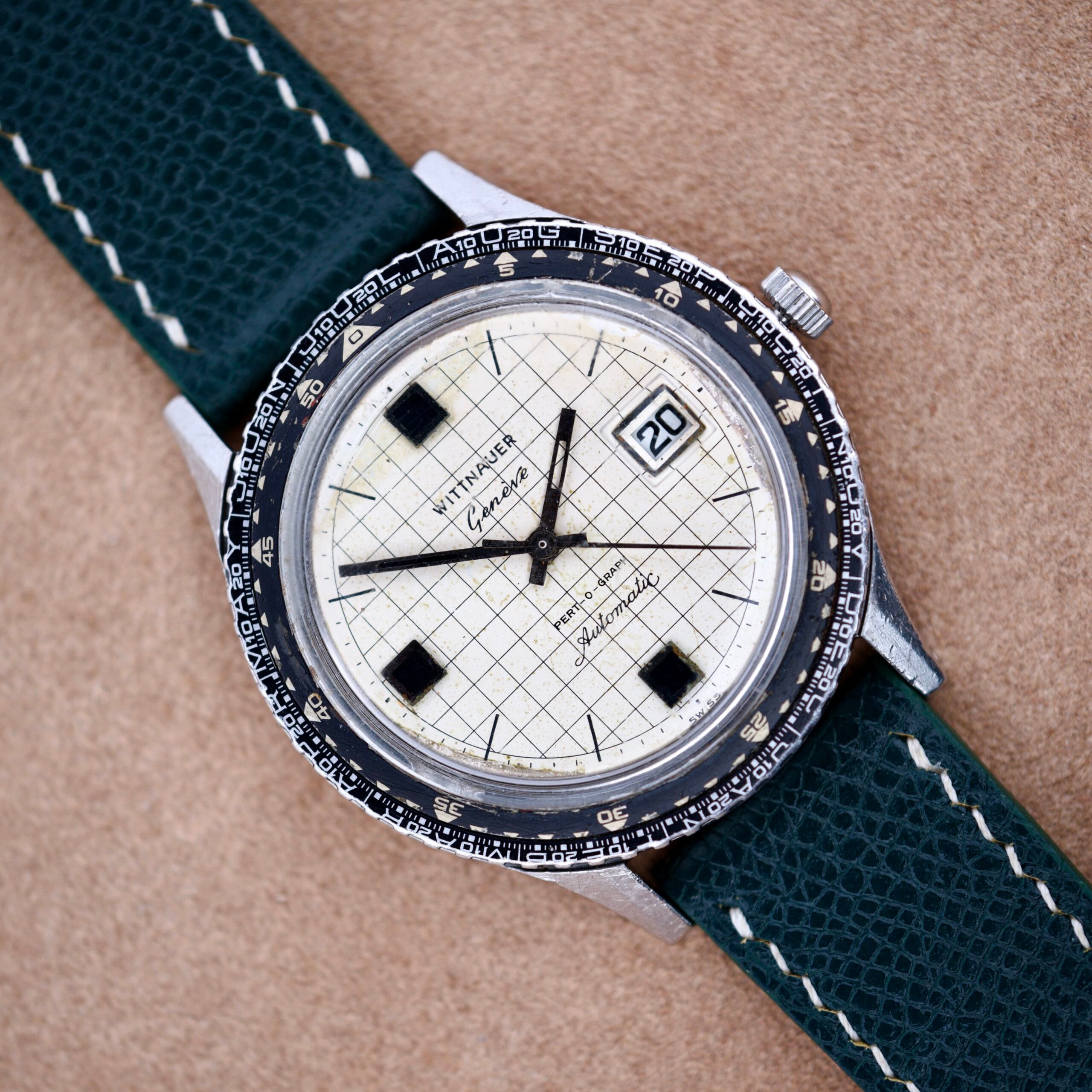
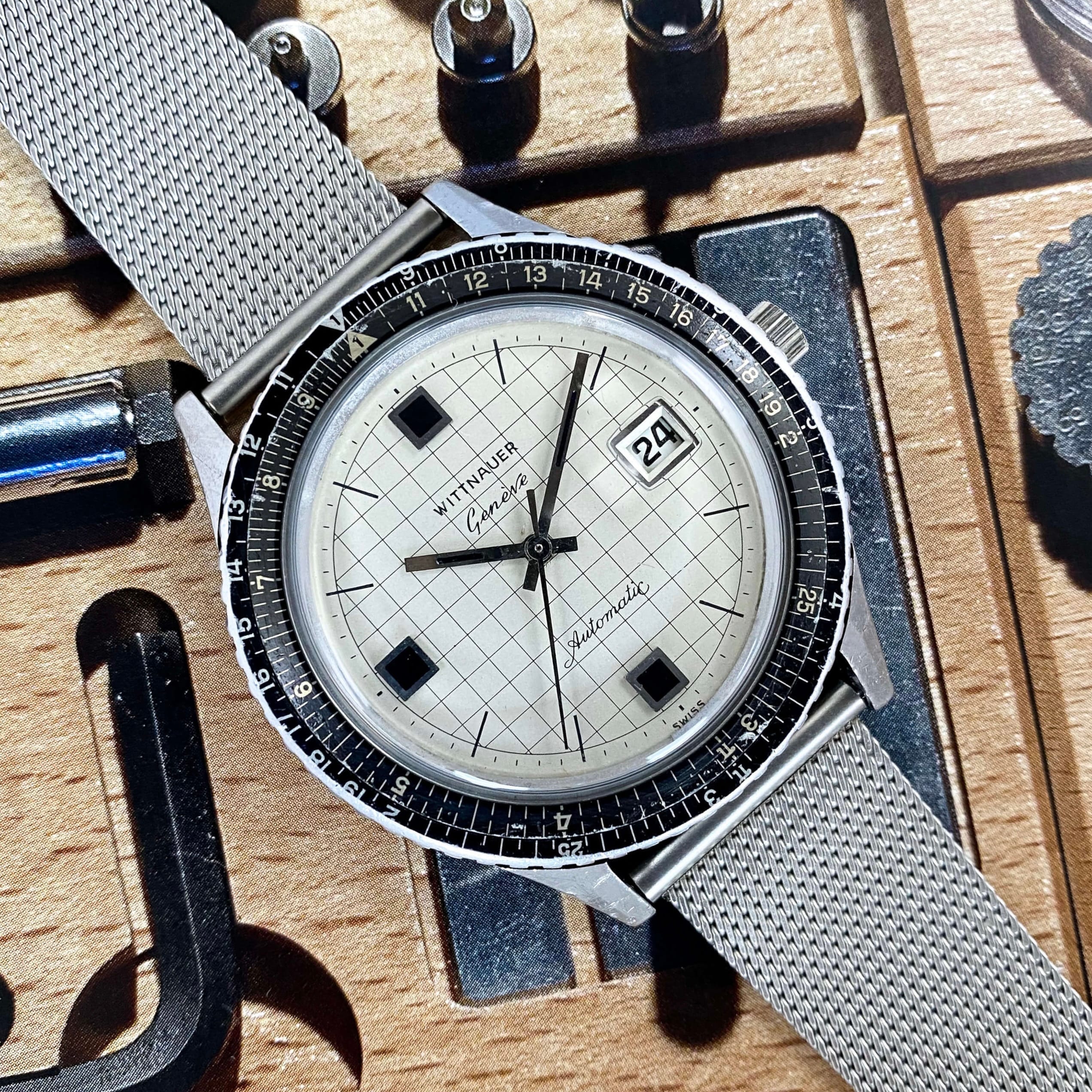
On the left you can see the common side rule bezel variant of the wittnauer pert-o-graph, and on the right you can see the pert-o-graph bezel variant.
The Wittnauer Watch Company
To understand the genesis of a watch as specialized as the Wittnauer Pert-o-Graph, one must first appreciate the heritage of its maker. The Wittnauer Watch Company was not an accidental entrant into the world of technical instruments; its entire history was built upon a foundation of creating robust, reliable timepieces for professionals operating at the limits of their fields. The Pert-o-Graph was not an anomaly for the brand, but a logical and strategic extension of its core identity into a new, modern professional domain.

The company was founded in New York in 1885 by Albert Wittnauer, a Swiss immigrant who arrived in 1872. Working for his brother-in-law, an importer of Swiss watches, Wittnauer identified a crucial market opportunity: to produce timepieces that combined the precision of Swiss manufacturing with a price point accessible to the American public. This philosophy of delivering high utility and quality became a brand hallmark. A pivotal development in the company’s history was its deep and enduring relationship with Longines. By 1885, Wittnauer had become the exclusive American agent for Longines, a partnership that provided access to world-class movements and bolstered its reputation. This collaboration was formalized in 1936 with the creation of the Longines-Wittnauer Watch Company, a name that became synonymous with quality and precision in the American market.
From its earliest days, Wittnauer specialized in creating purpose-built instruments. The brand supplied chronometers and navigation tools to pioneers of aviation and exploration, including Clarence Chamberlain, Admiral Byrd, and Amelia Earhart. As early as 1918, Wittnauer demonstrated its innovative spirit with the “All-Proof,” one of the first watches designed to be waterproof, shockproof, and anti-magnetic—a testament to its focus on durability and functionality for users in demanding environments. This legacy continued through World War II, during which the company produced essential military equipment, including compasses, aircraft clocks, and military-issue watches.
In the post-war era of the 1950s and 1960s, Wittnauer leveraged this expertise to produce a range of highly regarded professional chronographs and tool watches. Models like the Reference 242T became legendary, widely believed to have been a contender in the NASA trials to select the official “moon watch”. It was within this context of proven technical capability and a focus on professional-grade instruments that the Wittnauer Pert-o-Graph Ref. 7005 was born. The company had a history of identifying the needs of professionals facing complex challenges and building the right tool for the job. With the rise of large-scale industrial and governmental projects, the project manager became the new pioneer, and Wittnauer was perfectly positioned to equip them.
The PERT Principle
The name “Pert-o-Graph” is not a whimsical marketing invention; it is a direct and deliberate reference to one of the most significant project management innovations of the 20th century: the Program Evaluation and Review Technique (PERT). Understanding this methodology is essential to grasping the watch’s intended purpose and the intellectual framework of its target audience. PERT was a system designed to bring statistical order to projects of immense complexity and, crucially, to manage uncertainty in time estimation.
Developed in the late 1950s by the U.S. Navy’s Special Projects Office, PERT was created to coordinate the thousands of contractors involved in the Polaris nuclear submarine program. The primary challenge was scheduling a vast network of interdependent tasks, many of which had never been attempted before, making traditional time estimation unreliable. PERT addressed this by introducing a probabilistic approach to project scheduling.
At the heart of the PERT methodology is the three-point estimate. For any given task, planners are required to provide three time estimates instead of one :
- Optimistic Time (O): The minimum possible time required to complete the task, assuming everything proceeds perfectly with no setbacks.
- Pessimistic Time (P): The maximum possible time required, assuming significant delays and the materialization of known risks.
- Most Likely Time (M): The most realistic estimate of the task’s duration under normal conditions.
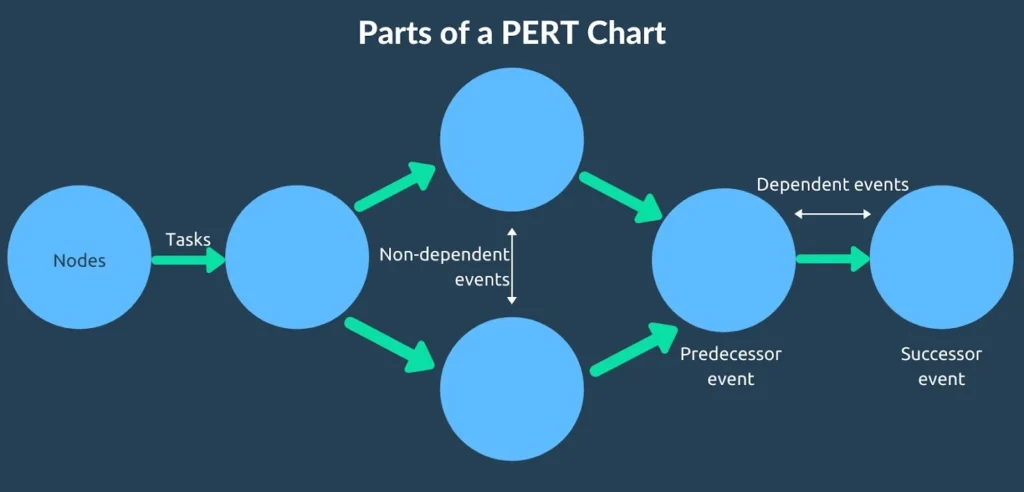
These three values are then used in a weighted average formula to calculate the Expected Time (E) for the task. The formula, an approximation of the Beta probability distribution, gives four times the weight to the “Most Likely” estimate, reflecting the higher probability of normal conditions over extreme ones. The formula is expressed as:
E=6(O+4M+P)
By applying this formula to every task in a project, managers could generate a more realistic overall timeline. These tasks and their dependencies are visualized in a network diagram known as a PERT chart, which uses nodes (circles or rectangles) to represent milestones and arrows to represent the tasks connecting them. This visualization allows for the identification of the Critical Path: the longest sequence of dependent tasks through the project network. Any delay to a task on the critical path will directly delay the entire project’s completion, making it the primary focus for management attention. Other paths have “slack” or “float,” which is the amount of time a task can be delayed without affecting the project’s final deadline.
The naming of a precision time-telling instrument “Pert-o-Graph” thus creates a fascinating conceptual marriage. A watch is a device for measuring deterministic, absolute time, while PERT is a methodology for managing probabilistic, estimated time. For the engineer or project manager of the 1960s, this duality was a daily reality, working against the unyielding passage of measured time while navigating the uncertainties of project schedules. The name was a masterful piece of marketing, signaling that this was a watch for those who understood and managed both concepts of time.
The Wittnauer Reference 7005 – An Academic’s Timepiece
The Wittnauer Pert-o-Graph Ref. 7005 is a watch whose design language speaks directly to its intended purpose as an instrument for technical and academic professionals. Every element, from the dial to the case, eschews superfluous decoration in favor of functional clarity and a distinctly intellectual aesthetic.
The most striking feature of the Wittnauer pert-o-graph is the dial, which is finished in white with a fine grid pattern reminiscent of graph paper. This immediately evokes the worlds of engineering, mathematics, and architectural drafting, setting a tone of precision and calculation. The hour markers are minimalist and functional. Applied, squared-off markers with black inlays are used at 6, 9, and 12 o’clock, providing strong visual anchors, while the remaining hours are denoted by simple printed black lines. A framed date window is cleanly integrated at the 3 o’clock position. A critical detail is that the watch is a “non-lume” model; the straight, baton-style hands and the hour markers are filled with black paint rather than luminous material. This choice further distinguishes the Pert-o-Graph from its military or dive watch contemporaries, reinforcing its identity as a tool for the office or laboratory, not for low-light field operations.
The Wittnauer pert-o-graph is housed in a substantial 40mm solid stainless steel case, a considerable size for the 1960s that gives it a modern presence. The case features sharp, faceted lugs and a practical screw-down caseback for water resistance. Authenticity is marked by the original winding crown, which is signed with the Wittnauer “W” logo. Protecting the dial is a domed acrylic crystal, a material standard for the era, which includes a subtle, internally mounted rectangular magnifier for the date display.
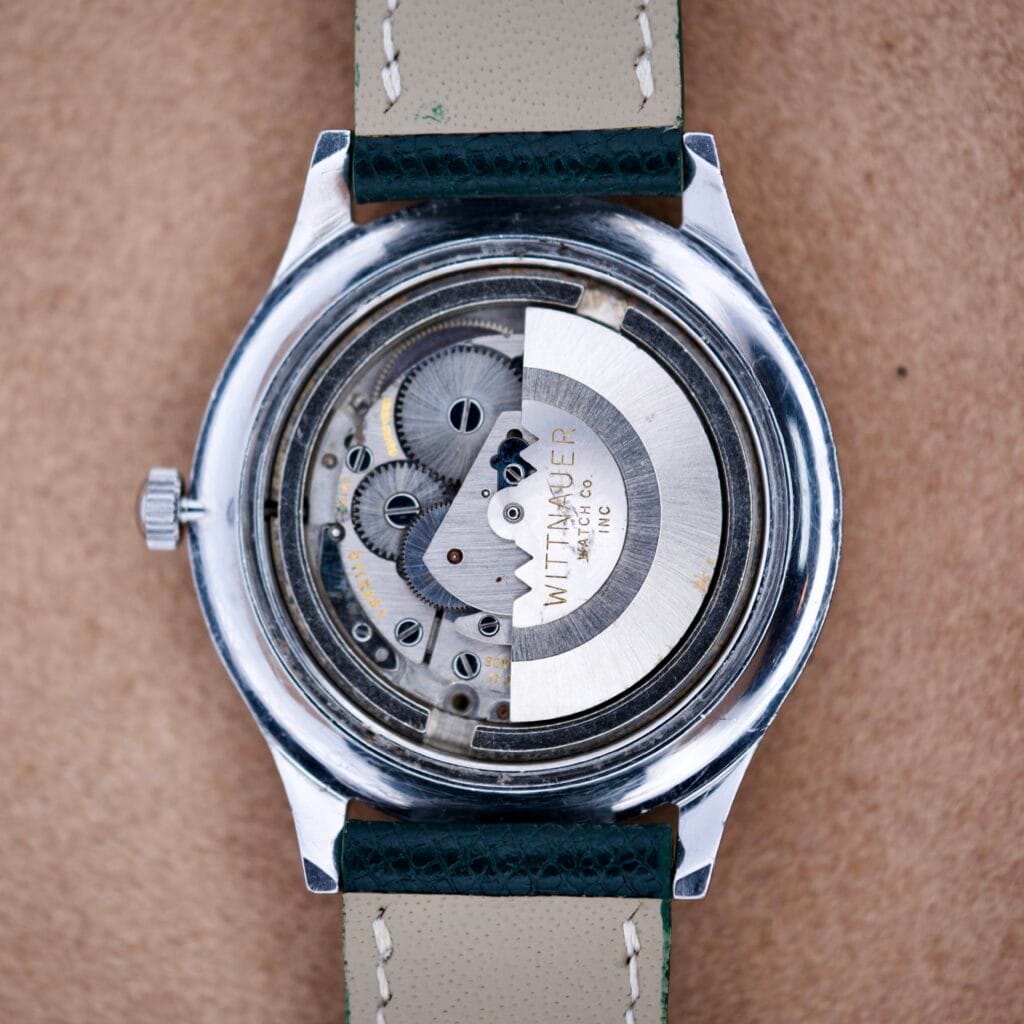
Powering the Pert-o-Graph is the robust and reliable Wittnauer caliber C11KAS. This Swiss-made movement is a self-winding automatic with 17 jewels, operating at a frequency of 19,800 beats per hour (BPH). This workhorse caliber ensured the accuracy and dependability expected of a professional-grade instrument.
| Brand | Wittnauer |
| Model | “Pert-o-Graph” |
| Reference | 7005 |
| Circa | 1960s |
| Case Material | Stainless Steel |
| Case Diameter | 40mm (excluding crown) |
| Caseback | Screw-down |
| Lug Width | 20mm |
| Movement | Wittnauer Caliber C11KAS |
| Winding | Automatic |
| Jewels | 17 |
| Frequency | 19,800 BPH |
| Dial | White with “Graph Paper” grid pattern |
| Hands/Markers | Non-luminous with black inlay |
| Crystal | Acrylic with internal date magnifier |
| Bezel | Rotating, bi-directional |
Variant I – The Common Slide Rule Bezel

The vast majority of Wittnauer Pert-o-Graph Ref. 7005 examples, including the one depicted in the provided images, are equipped with a rotating slide rule bezel. This feature transforms the watch into a wrist-mounted analog computer, capable of performing a variety of mathematical calculations. While thematically appropriate for a watch aimed at engineers, this bezel has no direct functional connection to the specific calculations of the PERT methodology.
The slide rule consists of two logarithmic scales: a fixed inner scale printed on the outer edge of the dial and a corresponding rotating outer scale on the bezel itself. The principle of operation is based on the mathematical properties of logarithms, which allow complex multiplication and division to be performed by mechanically adding or subtracting lengths on the scales.
The practical applications of this bezel are numerous and highly useful for a technical professional:
- Multiplication and Division: This is the most fundamental function. By aligning one number on the rotating scale with a unit index (typically the “10”) on the fixed scale, the user can find the product of that number and any other by reading the value on the rotating scale that corresponds to the second number on the fixed scale. Division is performed in the reverse manner.
- Rate Calculations: The slide rule excels at solving equations involving rates, such as speed, distance, and time. For example, if a user travels 75 miles in 30 minutes, they can align 75 on the outer scale with 30 on the inner scale. The answer, 150 mph, can then be read on the outer scale opposite the 60-minute marker (or MPH index) on the inner scale. Similar calculations can be made for fuel consumption or production rates.
- Unit and Currency Conversions: The bezel can be used for rapid conversions between different units of measurement, such as miles to kilometers or pounds to kilograms, by setting the known conversion ratio on the scales. It can also be used for currency conversions, a practical tool for international business or travel.
The inclusion of this feature on a watch named “Pert-o-Graph” was a clever marketing decision. While the slide rule cannot perform the specific weighted-average calculation of the PERT formula, it provides a powerful, general-purpose computational tool that would appeal to the same user base. It positioned the watch as an instrument for individuals who dealt with complex calculations as part of their daily work. The branding linked the watch conceptually to the world of project management, while the bezel provided a tangible, broadly useful calculating function. The watch was, in this form, a calculator watch thematically tailored for the age of systems analysis.
Variant II – The Elusive Pert-o-Graph Bezel
The central mystery of the reference 7005 lies in its second, exceedingly rare variant: a version fitted with a bezel that is not a slide rule, but a dedicated “Pert-o-Graph” calculator. The existence of this variant is confirmed in passing by authoritative horological sources, which note that a version was produced with “Pert-o-Graph” branding and a “Pert-o-Graph graduated bezel, rather than a slide rule”. For a long time, the exact function and origin of this bezel remained undocumented and a subject of speculation among collectors.
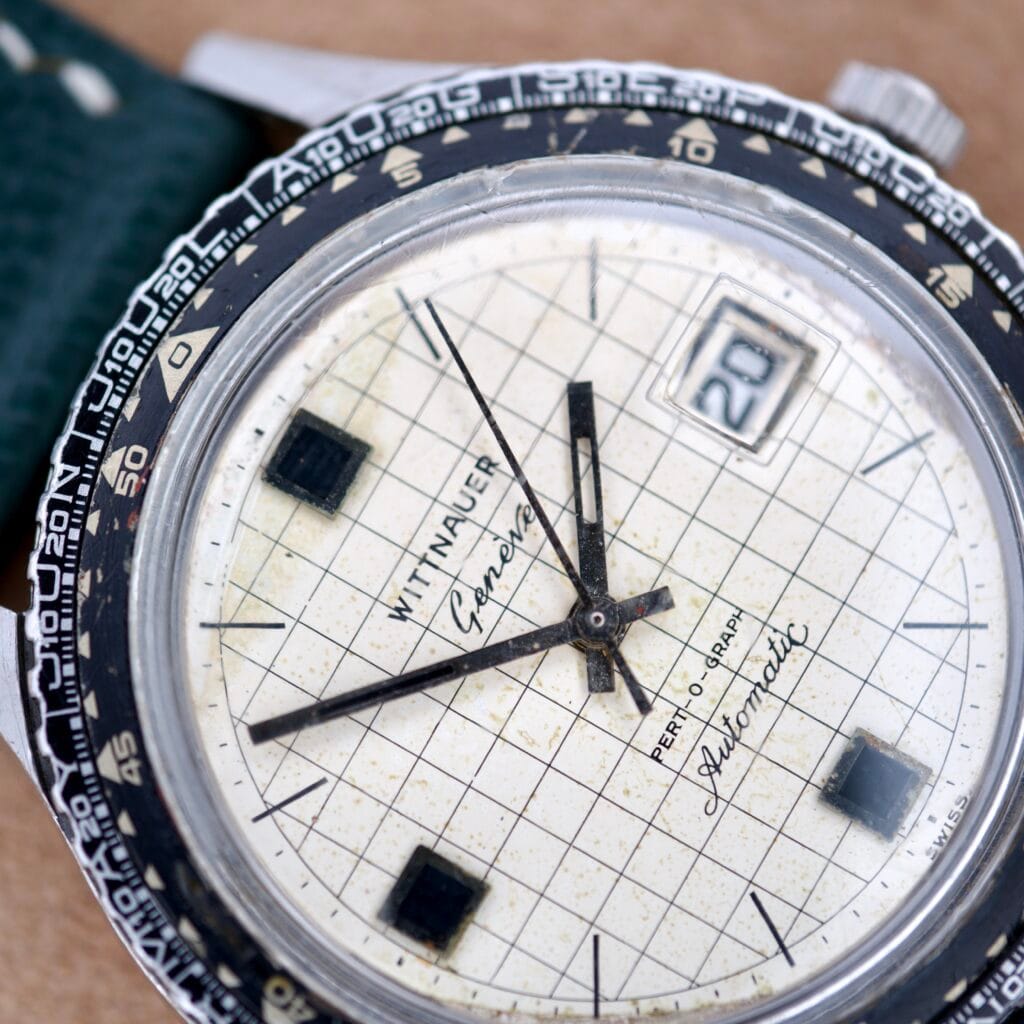
The key to unlocking this mystery comes from a remarkable piece of anecdotal evidence. A 2020 post on the social media platform Reddit provided a first-hand account from an individual whose great-grandfather had been involved in the marketing for the original “Pert-O-Graph,” which was not a watch, but a rotary project management computer from the 1960s. According to this account, Wittnauer, which already produced the reference 7005 with a slide rule bezel, was commissioned to create a special batch of these watches featuring a custom bezel based on this project management computer. This strongly suggests the watch was created as a promotional item or a corporate gift for the company that manufactured the Pert-o-Graph computer, or for its clients.
Crucially, this source reveals the bezel’s true, and surprisingly specific, function. It was not a complex device for calculating the PERT critical path. Instead, its utility was “limited to calculating the number of days to a certain date”. While seemingly simple, this function is directly relevant to project management, where tracking deadlines, milestones, and task durations is paramount.
| Feature | Variant I: Slide Rule Bezel | Variant II: Pert-o-Graph Bezel |
| Primary Function | General-purpose analog calculation | Specific date/duration calculation |
| Calculation Types | Multiplication, division, rate calculations, unit/currency conversions | Day/date counting, duration to a future date |
| Thematic Link to PERT | Conceptual: A calculator for a technical user familiar with PERT | Direct: A scheduling tool for project timeline management |
| Rarity | Uncommon | Extremely Rare |
| Origin | Standard Production | Likely Special/Promotional Order |
Collector’s Analysis and Conclusion
The Wittnauer Pert-o-Graph Ref. 7005 occupies a unique and fascinating space in the world of vintage watch collecting. Its value and appeal are driven not by horological complexity in the traditional sense—its movement is a reliable workhorse, not a high-complication masterpiece, but by its rich conceptual history and the compelling narrative of its dual identities.
The analysis reveals that the “Pert-o-Graph” name applies to two functionally distinct timepieces sharing the same reference number. The more common variant, with its slide rule bezel, is a handsome and capable calculator watch. It is already considered a rare “conversation piece,” a watch that is not often seen on the market and is prized for its unique graph-paper dial and academic aesthetic. Its appeal lies in its embodiment of the 1960s technological zeitgeist, a tool for the engineer and analyst.
The second variant, with its true Pert-o-Graph bezel, elevates the model to an entirely different level of collectibility. This version is exceptionally scarce, likely produced in a single, small batch as a promotional item. For collectors, such pieces—with a direct, verifiable link to a specific moment in industrial history—are grails. The discovery of its true purpose as a date calculator for project scheduling transforms it from a horological curiosity into a significant artifact. Its value on the vintage market would be substantially higher than its slide-rule counterpart, driven by extreme rarity and the unique story it tells.
In conclusion, the Wittnauer Pert-o-Graph Ref. 7005 is a testament to the brand’s keen ability to identify and cater to highly specific professional niches. It stands as a tangible link between the abstract theories of scientific management and the mechanical precision of Swiss watchmaking. The mystery of its two bezels, now largely resolved, adds a profound layer of intrigue that elevates the watch beyond a simple vintage tool. It is collected for what it represents: a period of immense technological optimism and the creation of new intellectual tools to manage it. For the discerning collector, the Pert-o-Graph, in either form, is more than a watch; it is a piece of mid-century business and technological history on the wrist.
Wittnauer Pert-O-Graph Ref. 7005 Rare Pert-O-Graph Scale Bezel
$1,670.00
This vintage Wittnauer Pert-O-Graph, reference 7005, is a rare tool watch equipped with an automatic movement and a date function. The stainless steel case surrounds a unique cream-colored dial featuring a distinct grid pattern, applied square hour markers, and a date window at the 3 o’clock position. Its defining characteristic is the bidirectional rotating bezel, which contains a “Pert-O-Graph” slide rule scale specifically designed for project management calculations. This example shows notable wear and fading on the bezel and patina on the dial, consistent with its age.
Related posts
The Rise and Fall of American Watchmaking: A Complete History
American watch manufacturing once dominated global timekeeping, pioneering mass production techniques that revolutionized industry worl...
The Evolution of the Rolex Datejust: 1945-1990
The Rolex Datejust revolutionized wristwatches in 1945 as the world's first self-winding waterproof chronometer with an automatically c...
The Ultimate Guide to Vintage Omega Seamasters
Vintage Omega Seamasters represent one of the most compelling propositions in watch collecting today - offering military provenanc...
The Expert’s Guide to Rolex Serial Numbers and Reference Numbers
Understanding Rolex serial numbers is essential for any Rolex enthusiast, collector, or potential buyer. These unique identif...
The Collector’s Guide to Vintage Wittnauer Chronographs
Vintage Wittnauer chronographs represent one of the most compelling value propositions in the world of mid-century timepieces. While br...
Wittnauer Pert-o-Graph Ref. 7005: An Analog Computer for the Project Manager’s Wrist
Wittnauer Pert-o-graph, tool watch or something else? In the history of horology, the "tool watch" has traditionally been defined by it...
The Expert’s Guide to Buying Vintage Watches on eBay In 2025
eBay, to the aspiring watch collector, is a landscape of profound contradiction. It is a digital bazaar of immense scale, a place where...
Complete Guide to the Rolex Datejust 1601
In the grand pantheon of horology, few timepieces command the same blend of understated elegance, historical significance, and everyday...
How the Quartz Crisis Nearly Ended Swiss Watchmaking
Before the quartz crisis (1970s), the Swiss watchmaking industry stood as an unshakeable colossus, a global symbol of precision, intric...
An Expert’s Guide to Omega Reference Numbers
Omega's rich horological history, stretching back to 1848, has produced an astonishingly diverse and extensive catalogue of timepieces....
Patina vs. Damage on a Watch Dial
Among vintage watch enthusiasts and collectors, one of the most debated topics revolves around patina and damage. What sets the two apa...
How Old Is My Bulova Watch? Production Date Guide
Bulova, one of the first companies to mass-produce wristwatches in the early 20th century, has made it easier than most to identify the...

